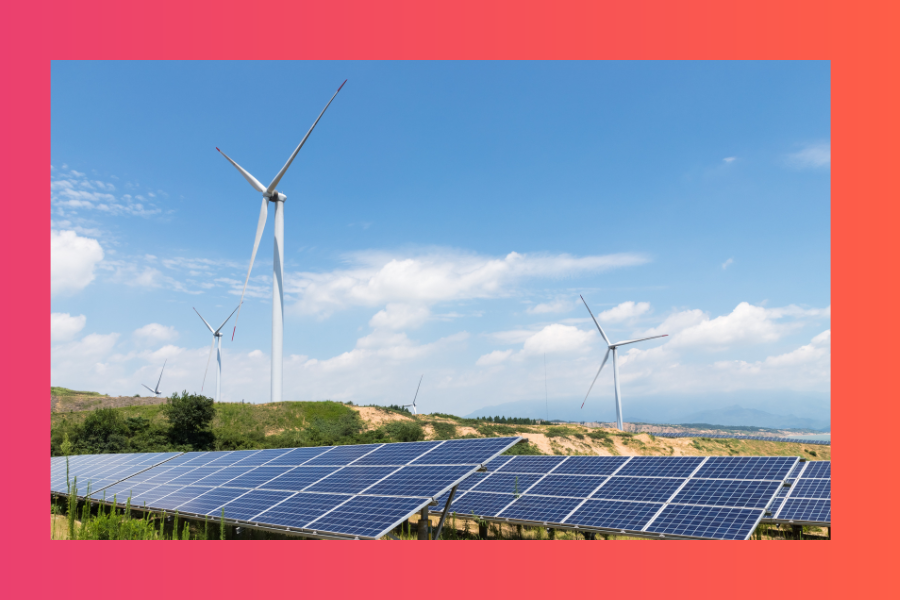Which Australian Jurisdictions are Leading the Green Transition?
It’s widely known that Australia is land which has keenly embraced solar power. In fact, it’s been held that Australia has had the highest uptake of...
6 min read
![]() Solar Trust Centre Team
:
Aug 23, 2022 10:43:41 AM
Solar Trust Centre Team
:
Aug 23, 2022 10:43:41 AM

Australia and the United States of America (U.S.) share a great deal in common, both in terms of a similar history, and future directions these two countries must travel. Perhaps nowhere is this more apparent in the 21st century than the opportunities and challenges each nation must respond to when it comes to growing renewables, and taking strong action on climate change. This is owing to the fact that Australia and the U.S. both contribute a substantial amount (granted, when measured per capita in Australia's case) to annual global emissions. Just the same, both countries also possess the ingredients required to become huge and helpful contributors in this century to the renewables revolution, and to seeing human beings come to live sustainably, not just in these two nations, but all across the world.
Yes, Australia and the U.S. have a great deal in common, but there are also of course differences between them, and they're visible when it comes to going green. So, while they're indeed travelling in a similar direction overall, the precise path each must take in order to get there shall vary in certain instances. Let's now compare Australia and the U.S. when it comes to green action, and discuss in-depth what the current prospects for progress look like for each nation right now.
Both Australia and the U.S. maintain a number of activities - such as coal mining - which must end soon given the huge contribution they make to emissions. Certainly, Australia and the U.S. have made some commendable inroads in going green - and government policy legislated for in recent times in Canberra and Washington D.C. is lighting the way to a more promising path - but there's no getting around the fact that both countries continue to pollute heavily. This reality is currently the Achilles' heel in the aspiration of both nations to go green.
The U.S. is the world's second-biggest emitter (with China the biggest). Obviously, this is a difficult factor for the U.S. in seeking to go green. But as discussed further below, while the size of this problem is huge, so are the resources that the U.S. can put towards addressing the issue. By contrast, Australia emits around just 1% of the world's annual emissions. Yes, this isn't as big as the U.S., but it's also certainly not an excuse for inaction. In reality, Australia has previously recorded the highest emissions per capita in the world from coal power, and thus certainly cannot absolve itself from responsibility in seeking to drive positive change in this area internationally.
As detailed in our previous comparison piece on Australia and the U.K., Australia has certainly made some terrific gains when it comes to growing solar power capacity, with over 25GW of solar capacity nationally now held in the country. The previous Coalition federal government - while keen to try and claim credit for the growth of solar whenever they could - was far from a great help in the endeavours to see Australia shift to renewables. Instead, credit goes to state governments and other civic authorities, businesses, and millions of regular households across the nation who have been genuine and committed drivers of solar's growth in the country. In the U.S., just as solar's progress has also shown great promise - with it estimated the nation presently has around 97 GW of capacity (alongside more than (an estimated) 135GW of wind power capacity as of January 2022) - recent legislative developments suggest the industry is now set to get a very significant shot in the arm. So, let's now touch on this big change in the next section.
The title of the U.S’s most significant law on climate change action so far could confuse a casual observer. At first glance, the Inflation Reduction Act doesn't sound like a law that'd hold a great deal of help for green action. Yet, amidst the finer details of this legislation are many truly immense changes, that are set to turbocharge American green action.
The core goal of this new law is to see the country drive down its emissions by 40% based on 2005 levels by 2030. Within the new law's offerings is around US$370 billion (approximately [and all following conversions approximate] AU$540 billion) that shall provide funding for clean energy, and tax incentives surrounding electric vehicles (EVs), with Americans on a low or middle income able to get US$4000 (AU$5800) in tax credits back for buying a used EV., and up to US$7500 (AU$10,000) for buying a new one. There is around US$9 billion (AU$13 billion) allocated for residential energy rebate programs.
The U.S. has also made self-reliance surrounding green energy an increasingly important part of their national security strategy. US$60 billion (AU$87 billion) is to aid in the creation of clean energy manufacturing on-shore in the U.S, and, (via the Defence Production Act) US$500 million (AU$725 million) is allocated for the creation of manufactured goods such as heat pumps. The U.S., as the world's sole superpower and a key security partner for numerous allied nations around the world, is obviously required to think about self-sustainability and national security in a distinctive way compared to many other nations. Nonetheless, it can be said the quest for self-sustainability in renewable energy and the supply chain is certainly set to be of growing importance to essentially all nations in the future, especially as the pandemic - and the outbreak of conflict in Ukraine - has illustrated the risks involved in a country being reliant on imported energy and manufactured goods. Accordingly, just as it's been recently occurring in the U.S., this is an area where growing conversations surrounding this topic in Australia can be expected to be seen in the years ahead.
In Australia, the Albanese government recently passed the Climate Change 2022 bill through the Lower House. The bill requires that the government's emissions reduction target of 43% on 2005 levels by 2030 - in addition to achieving net zero by 2050 - is officially made law. Following negotiation with the Greens, Labor tweaked their bill to make the provision that while the current targets could be upgraded to be more ambitious, they could not be reduced. This clause would make it harder for any successive government to try and wind back these goals.
At time of writing, the bill is yet to go through the Senate. As the government does not have a majority in that chamber, in order for it to pass there - allowing for the fact the Coalition is not set to support the bill - the Greens are expected to hold the key votes in determining whether it gets through. History shows the last time a Labor government came to office and it clashed with Greens over a key piece of climate change legislation the bill was defeated - with figures from both parties thereafter trading criticism in the history books over who was to blame for the apparent failure to negotiate - and this is surely in mind among the current crop of Labor and Greens political leaders who want to see meaningful action on climate change taken.
So, just as millions of Americans remain aspirational that the Inflation Reduction Act which is now law will help the U.S.' turn the page' in its green efforts, so too are Australians hopeful 2022 will deliver a breakthrough in the Great Southern Land's quest to progress in this area too.
While the Inflation Reduction Act is a significant piece of progress, there is still more to be done. For instance, the U.S. federal government still has the scope to improve regulations caused by car pollution and power plants. The fact the Act also offers an avenue for some support of fossil fuels means a successive bill that ends such support would be ideal in the minds of green advocates. It's also a fact that the current Supreme Court has already thrown a spanner in the works of the Biden Administration's ambitions surrounding green action prior - with its ruling that curbed the Environmental Protection Agencies' power surrounding power plants and the reduction of their emissions - and its capacity to do so again in the time ahead can't be ruled out, should another similar case come before it. Nonetheless, overall, green advocates in the U.S. are rightfully excited about the progress the Inflation Reduction Act has made, and are hopeful the country can build on it.
In Australia, Chris Bowen, the federal energy minister has said, "The climate wars may or may not be over, but they're certainly in retreat". Labor's legislation must still pass the Senate before confirmation of a major step forward on climate change action can be made official. This said, it’s also necessary to recognise Labor has indeed commendably taken a real step forward here in its first year in government in looking to legislate a net zero target into law, by getting it passed through the Lower House. By contrast, the Coalition took no such step during the greater part of a decade that it was in office prior to May of this year. In time, making Australia's 2030 target - and its 2050 target especially - more ambitious is a must. But right now, after years of no meaningful action whatsoever on going green at a federal level, Australians indeed have cause to be optimistic.
Overall, as two young and wealthy nations with an economic history heavily littered with the use of fossil fuel and other polluting resources, Australia and the U.S. have a shared challenge on their hands when it comes to responding to climate change. Yet additionally, they also have a shared opportunity to build the future of their economies with green resources, and in turn, a shared obligation to wind up their pollution activities, not only for the benefit of their citizens, but others around the world. At their best, both countries have shown a terrific capacity for innovation and leadership in their own ways on the world stage. With the steady progress of landmark legislation in both nations recently, green advocates must certainly remain mindful that much work remains to be done (and many setbacks could yet occur), but there is indeed good reason to think each nation is now commencing a substantial political change around going green, and accordingly that 2022 is the start of a great new chapter.
For more on renewable energy, you can read here about how to find a quality solar installer, here about the relationship between renewables, climate change, and insurance.
-2.jpg)
It’s widely known that Australia is land which has keenly embraced solar power. In fact, it’s been held that Australia has had the highest uptake of...
.jpg)
Of all the countries in the world which Australia is comparable with, arguably Canada is the closest. Yes, New Zealand is the nearby neighbour and...

A comparison between Australia and the United Kingdom when it comes to solar power may appear an unusual endeavour at first glance. After all, while...